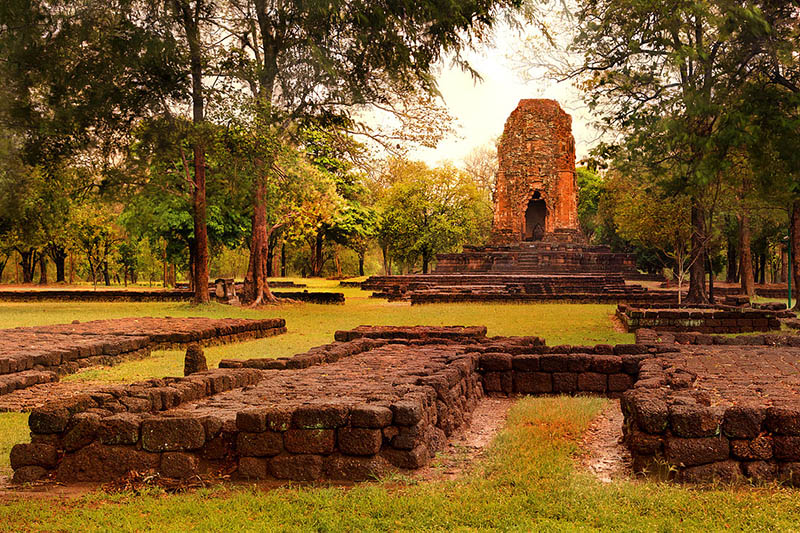Millennium-old remnants of the Khmer empire in central and eastern Thailand as well as the kingdom’s largest national park are up for UNESCO World Heritage status this week.
Extending recognition to the Si Thep Historical Park in Petchabun, a trio of ancient Khmer sites in Buriram province and the Kaeng Krachan National Park in Phetchaburi province will be discussed starting Thursday in Azerbaijan, where the World Heritage Committee is meeting to consider new cultural sites worldwide.
Si Thep was “a significant hub for exchange trade and networks between the central and northeastern regions during the late prehistoric period and Khmer culture period” and have been in use for upward of 1,700 years, according to UNESCO.
Update: Human rights concerns torpedo Thai hopes for UNESCO status as Bagan gets nod
Today, brick ruins familiar to other Khmer ruins remain; the site was put forward by Thailand in April. At the same time, a cluster of ancient sites dedicated to Shiva in eastern Buriram were nominated.
The Phanom Rung, Muang Tam and Plai Bat sanctuaries include remains of structures dating back to the 10th century, including a library, sanctuary, hospital and rest house for travelers.
The third site to be considered, Kaeng Krachan, was first proposed eight years ago. Covering 2,914 square kilometers with dense forests, waterfalls and biological diversity, it is the largest in Thailand.
Thailand’s submissions will be discussed Thursday and Friday, according to the government’s PR department.
Thailand is also pushing for more “intangible” culture after the traditional masked dance khon won recognition in November. It has also nominated traditional Thai massage and a southern dance drama called nora.
Thailand has five UNESCO-recognized sites. They include two natural and three cultural locations: The historic cities of Ayutthaya and Sukhothai and the Ban Chiang archaelogical site in Udon Thani province. The two natural areas are the Thungyai-Huai Kha Khaeng Wildlife Sanctuaries and Dong Phayayen-Khao Yai Forest Complex.
World Heritage sites are selected by the United Nations Educational, Scientific and Cultural Organization for their cultural, historical, scientific or significance to humanity as a whole. They become legally protected by international treaty.
They also create great economic benefit in the form of tourism. To be selected, sites must be already be unique landmarks.
Related stories:




